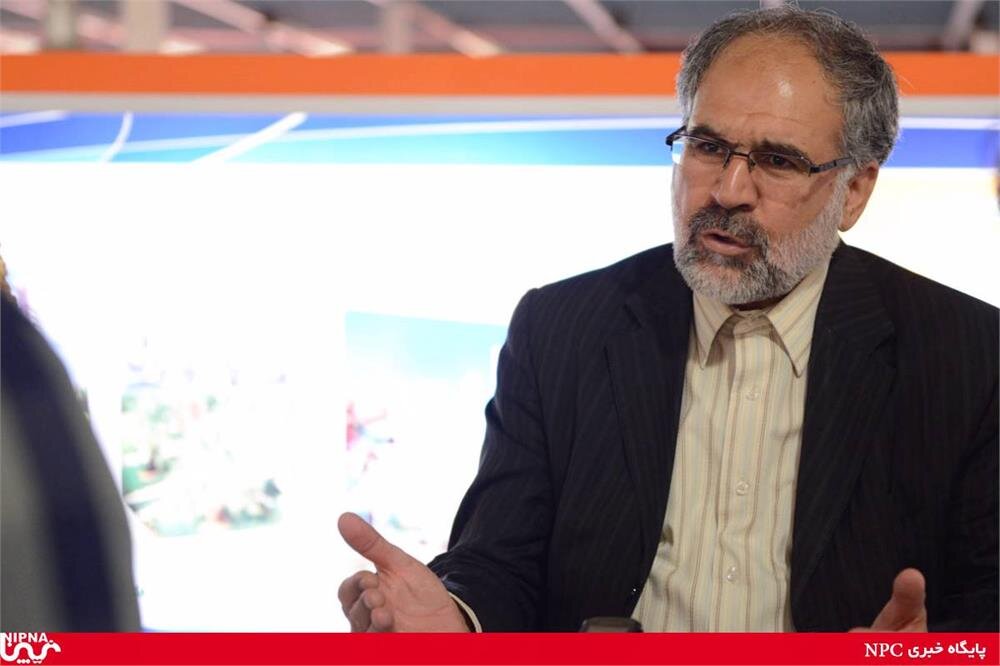‘Iran pushing to double petrochemical production by 2025’

TEHRAN - Nowadays, petrochemical industry is playing a crucial role in Iran's non-oil economy. According to official data, petrochemical exports constitute the second largest hard currency earner in Iran after crude oil. Petrochemical exports already make up nearly 33 percent of the country’s non-oil exports.
Furthermore, considering the undeniable significance of petrochemical industry in Iran’s resilient economy in the sanctions era, Iranian Oil Ministry and the country’s National Petrochemical Company (NPC) have been taking major steps to facilitate further development of this industry in recent years.
As a platform for showcasing the capacities and capabilities of Iran’s petrochemical industry, the International Exhibition of Plastic, Rubber, Machinery and Equipment (IRAN PLAST 2019) attracts hundreds of exhibitors, industry activists, traders and visitors from all over the world.
On the sidelines of this year’s exhibition, which is the 13th edition of the event, Tehran Times has conducted an interview with the Director of NPC’s Projects Ali-Mohammad Bosaqzadeh. What follows is a summary of this interview.
Petchem output to exceed 130mt by 2025
Regarding NPC’s plans for development of the country’s petrochemical industry in the upcoming years, Bosaqzadeh noted that Iran's annual petrochemical output, which is currently at 65 million tons, is planned to reach more than 100 million tons by the Iranian calendar year of 1400 (ends on March 2022) and to 130 million tons or nearly doubled) by 1404 (ends on March 2026).
“In this regard NPC is following a master plan which includes two major jumps in the country’s petrochemical industry, and it will rise the country’s revenues from petrochemical exports to $25 million by the year 1400,” he said.
According to the official, for the current calendar year (which ends on March 19, 2020), NPC is planning to inaugurate six major projects by the yearend.
The projects include Arak Petrochemical Complex, the first phase of Bushehr Petrochemical Complex, and Takht Jamshid SBR & PBR Production Plant in Mahshahr, Khuzestan province as well as Ilam Petrochemical Complex in northwestern province of Ilam.
The official noted that currently there are 64 petrochemical projects underway across the country with physical progresses between 20 and 99 percent.
“13 prioritized petrochemical projects are also planned to go on stream in the next Iranian calendar year of 1399 (March 2020- March 2021), and four projects are also due to be inaugurated in the calendar year of 1400,” he explained.
“With the completion of the underway projects, the country’s petrochemical output will exceed 100 million tons in the [Iranian calendar] year of 1400 and the industry’s revenues will hit $25 billion,” Bosaqzadeh said.
Impact of sanctions on petchem industry not significant
Asked about the impact of the U.S. sanctions on the country’s petrochemical industry and NPC’s development plans, the official stated that with the experience and self-efficiency that the country has achieved since the previous rounds of sanctions, Iran’s petrochemical industry, now, is almost completely self-reliant.
“In terms of licenses and engineering and technical knowledge, our petrochemical industry is currently at a very good place and we can even compete with very advanced countries in this regard,” he said.
He further noted that “Most of the underway projects in this industry are currently using domestic equipment, licenses and technological knowledge of Iranian experts.
“In some cases which we would be needing to import equipment from other countries, in addition to European countries, we have also found new markets in Asia and among CIS countries which are more than willing to provide us with the necessary equipment,” he added.
Financial and banking issues
Another issue that Bosaqzadeh mentioned as one of the major factors pertaining to the progress of NPC’s projects, was supplying liquidity and funding of the projects.
“In this regard, the main policy which NPC has been following is supporting the country’s petrochemical companies in order to increase their exports, so that their own revenues could be used for expansion and development of new projects,” he explained.
“That means, the foreign currency that petrochemical companies earn can be used to supply their own equipment needs and the rest which is injected into NIMA [Iran’s Integrated Forex Management System] can also be used to buy the necessary equipment for new projects.”
Final thoughts
Wrapping up the interview, NPC’s projects director underlined the need for supporting domestic production, noting that “Our petrochemical industry is one of the major manifestations of resilient economy in the country and we are moving toward complete self-sufficiency.”
“This year, the exhibition is mainly focused on promoting domestic producers. It is aimed to identify the needs and requirements of the domestic market and to support the producers and the industry’s down-stream sector,” he said.
“Every year nearly $6 billion of petrochemical products are used inside the country and over $12 billion is also exported. The more we use domestic products the more value added it will have for the domestic producers.”
The official, finally expressed hope that, events such as “Iran Plast” could provide a platform for Iranian companies to find new markets to present their products and also to get to know their foreign counterparts and get acquainted with modern technologies in this industry.
EF/MA
Leave a Comment